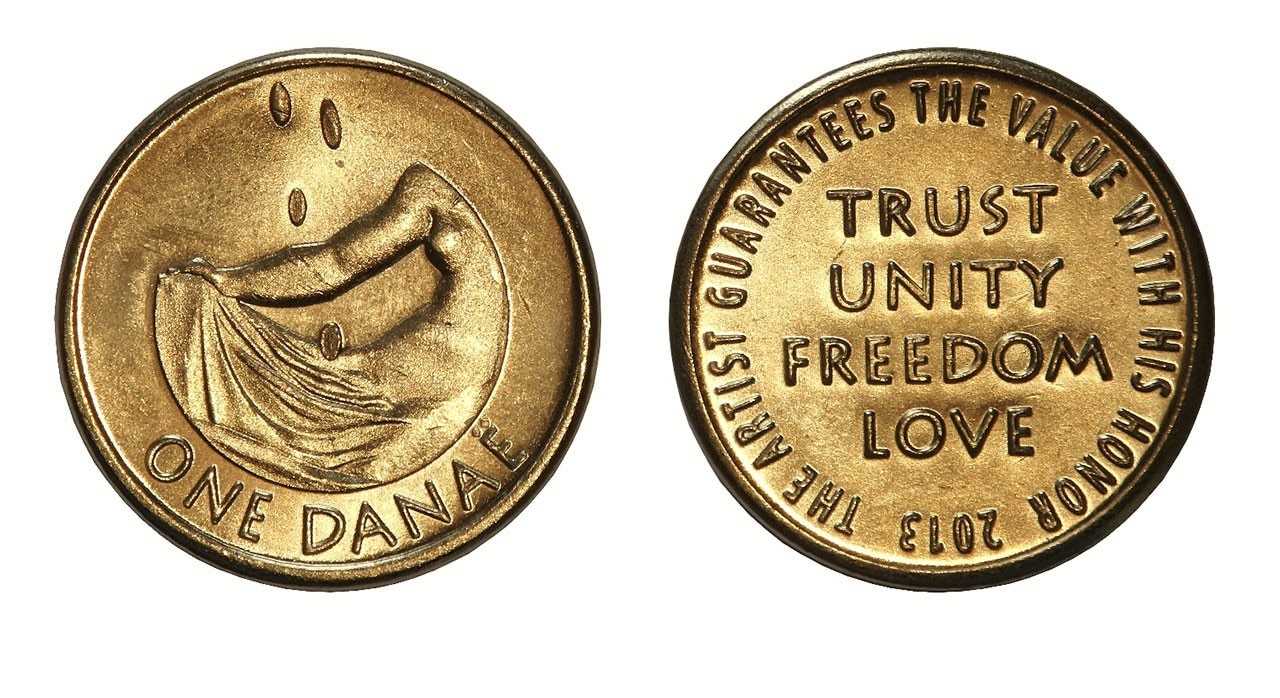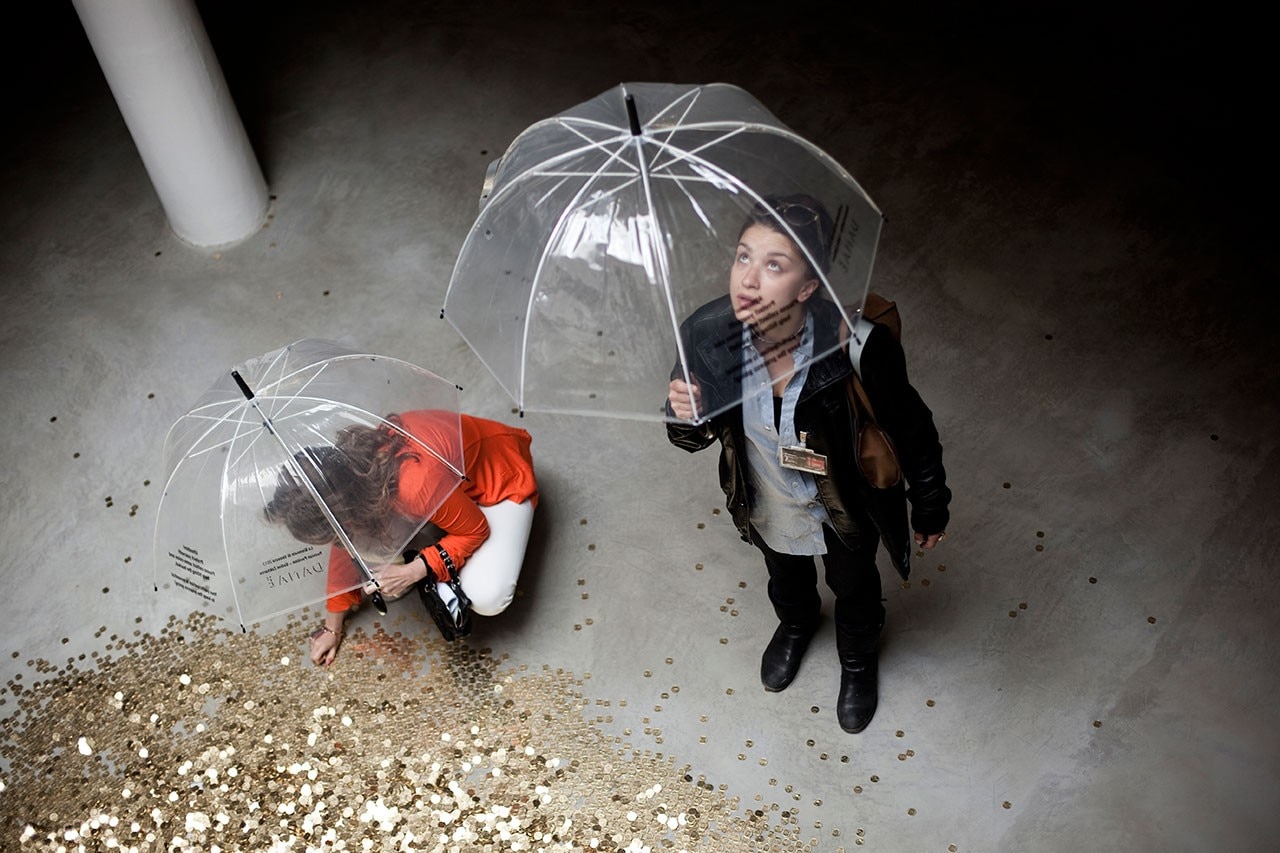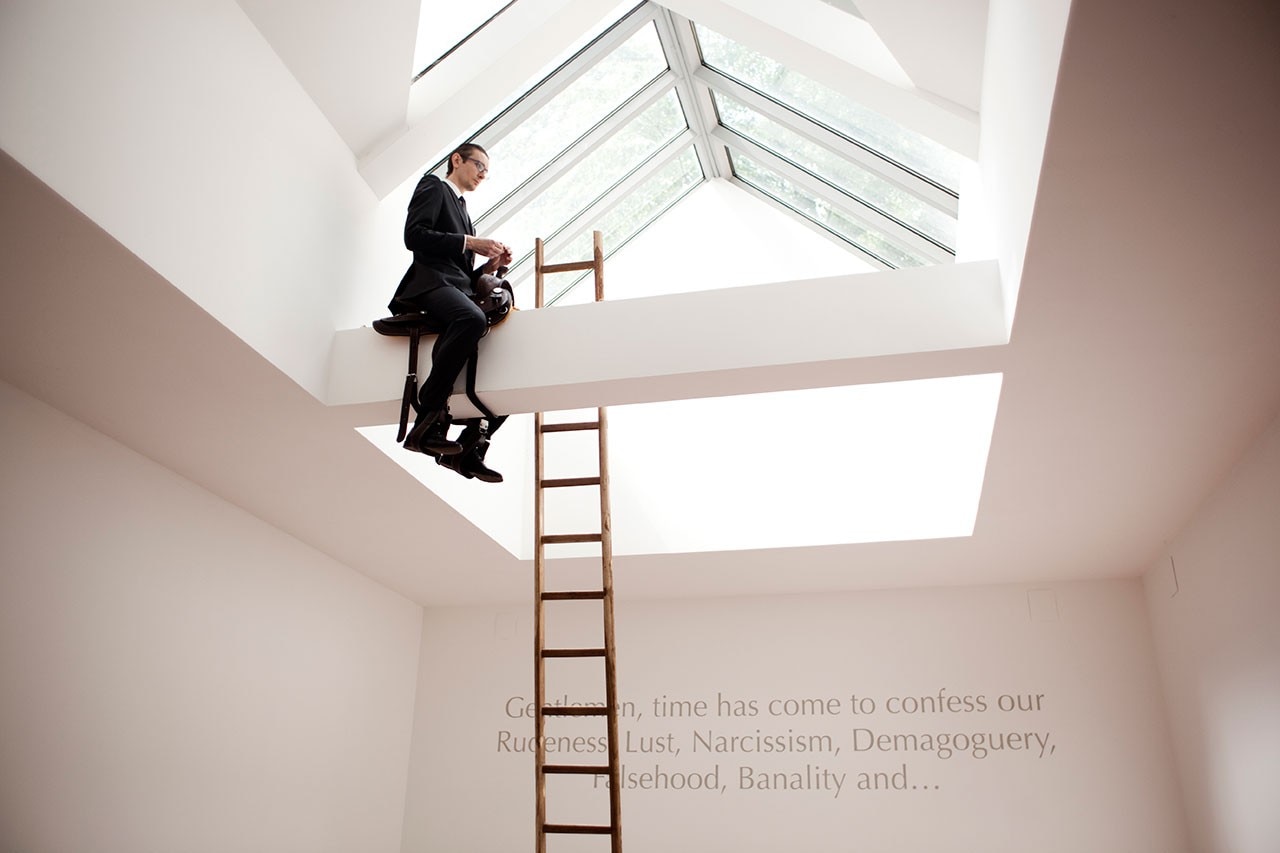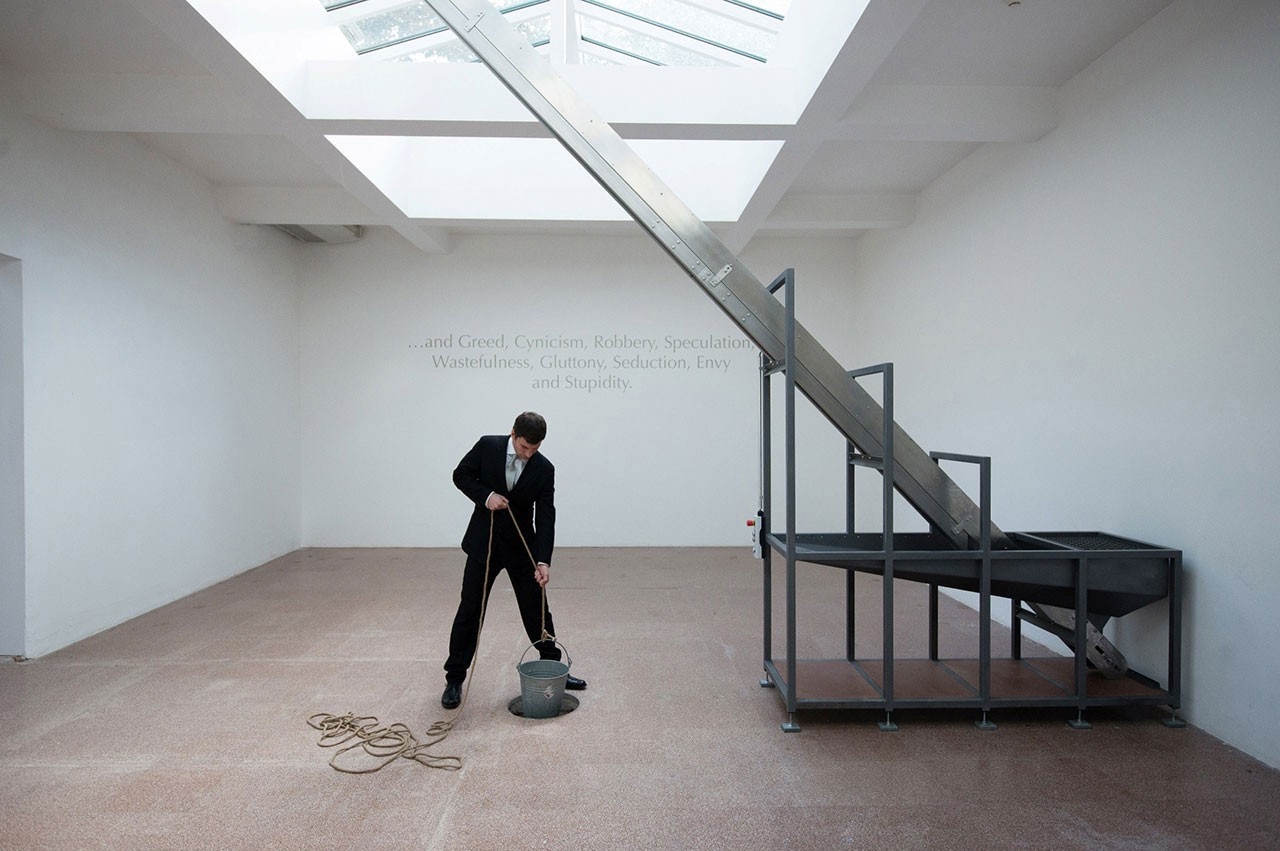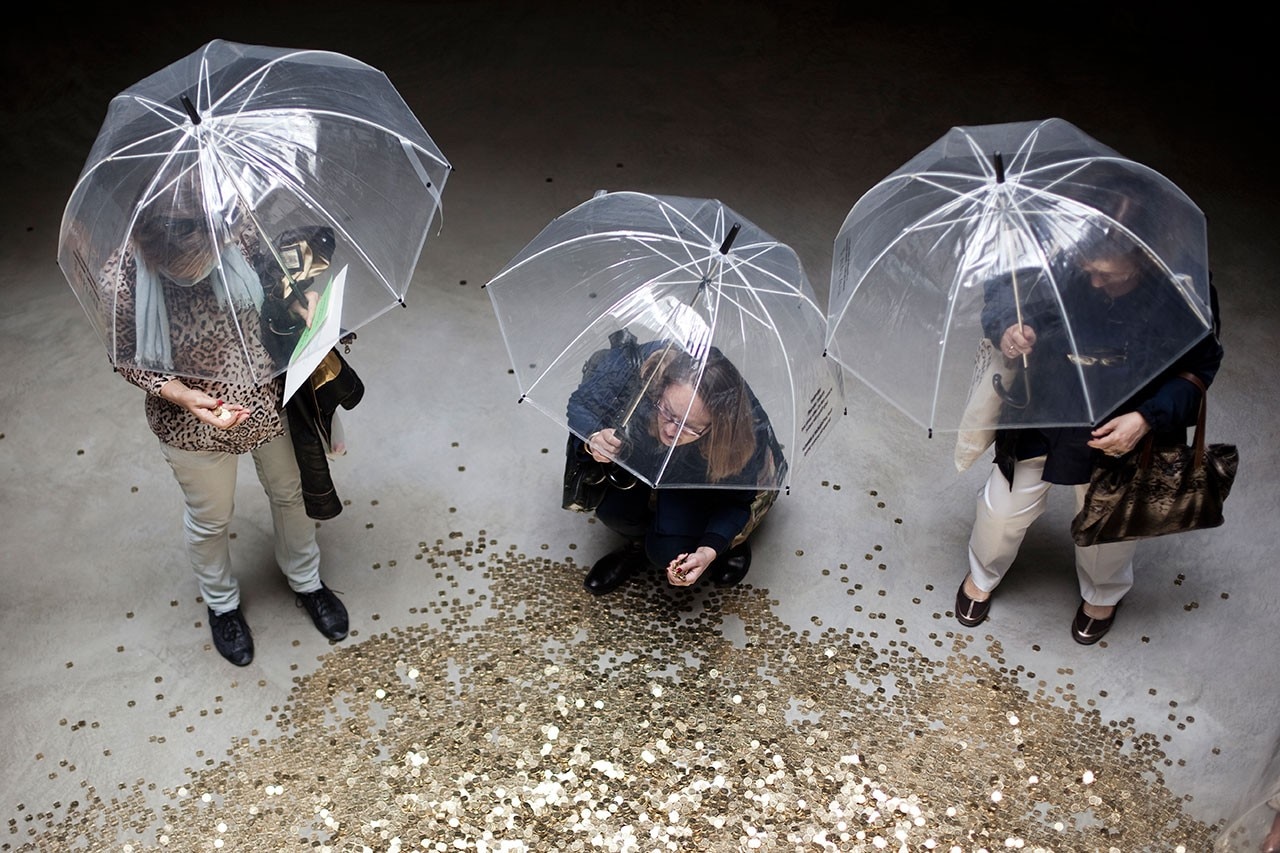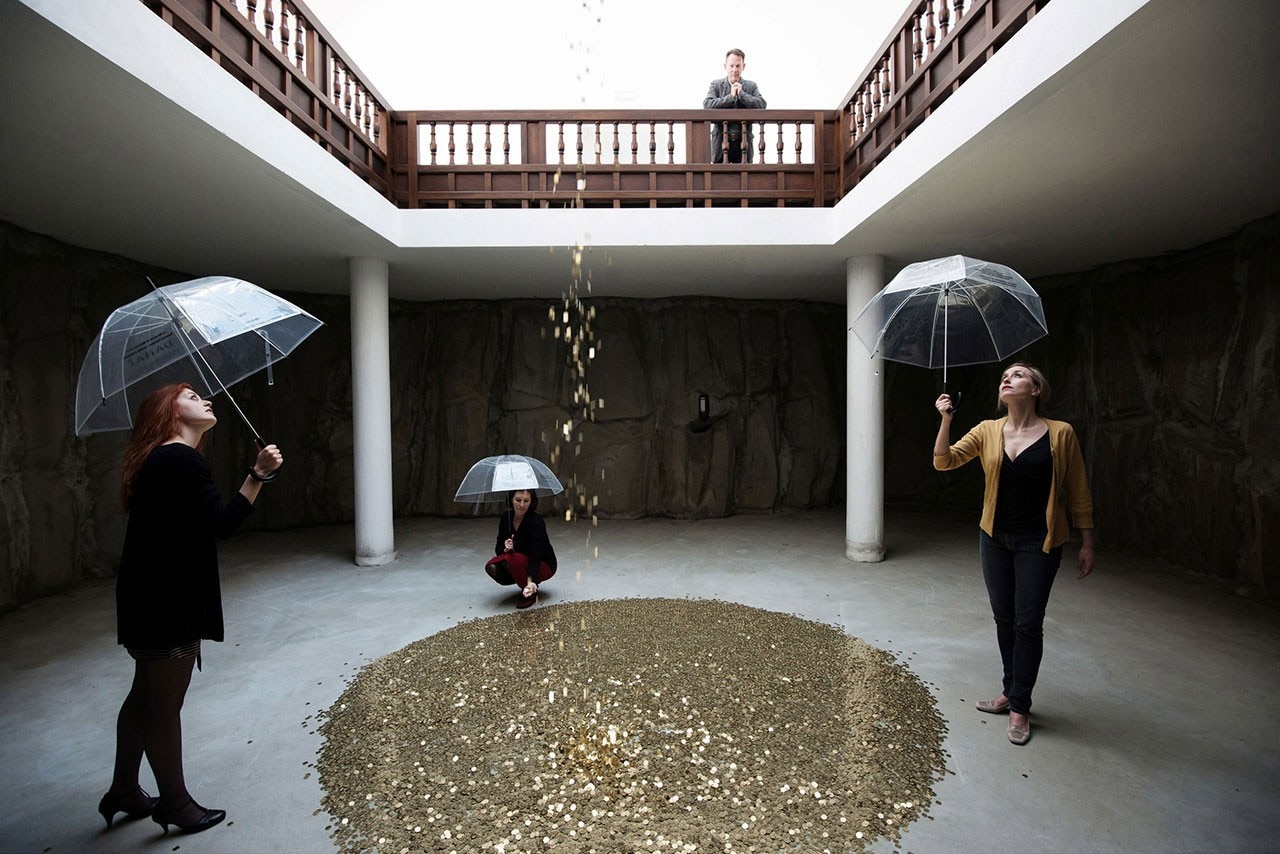Vadim Zakharov, an exponent of the Moscow conceptualists, has staged a performance in five acts for the Biennale at the Russian pavilion in the Giardini — curated by Udo Kittelman and under the supervision of commissioner Stella Kesaeva. The starting point and formal 'pretext' for Zakharov’s work is the Greek myth of Danaë, the inspiration behind numerous existing works of art — such as one by Titian painted in 1553 or another by Rembrandt, painted between 1636 and 1647 and vandalised in 1985 at the Hermitage — revolving around the themes of power and destiny. Nothing could be done by King Acrisius of Argos against the prophesy of his death, the work of his grandson Perseus. He tried to fight against it by locking his daughter Danaë in a bronze tower (or cave) but Zeus visits her in the form of golden rain and impregnates her. Mother and son also survive being abandoned by Acrisius at sea, locked inside a wooden box.
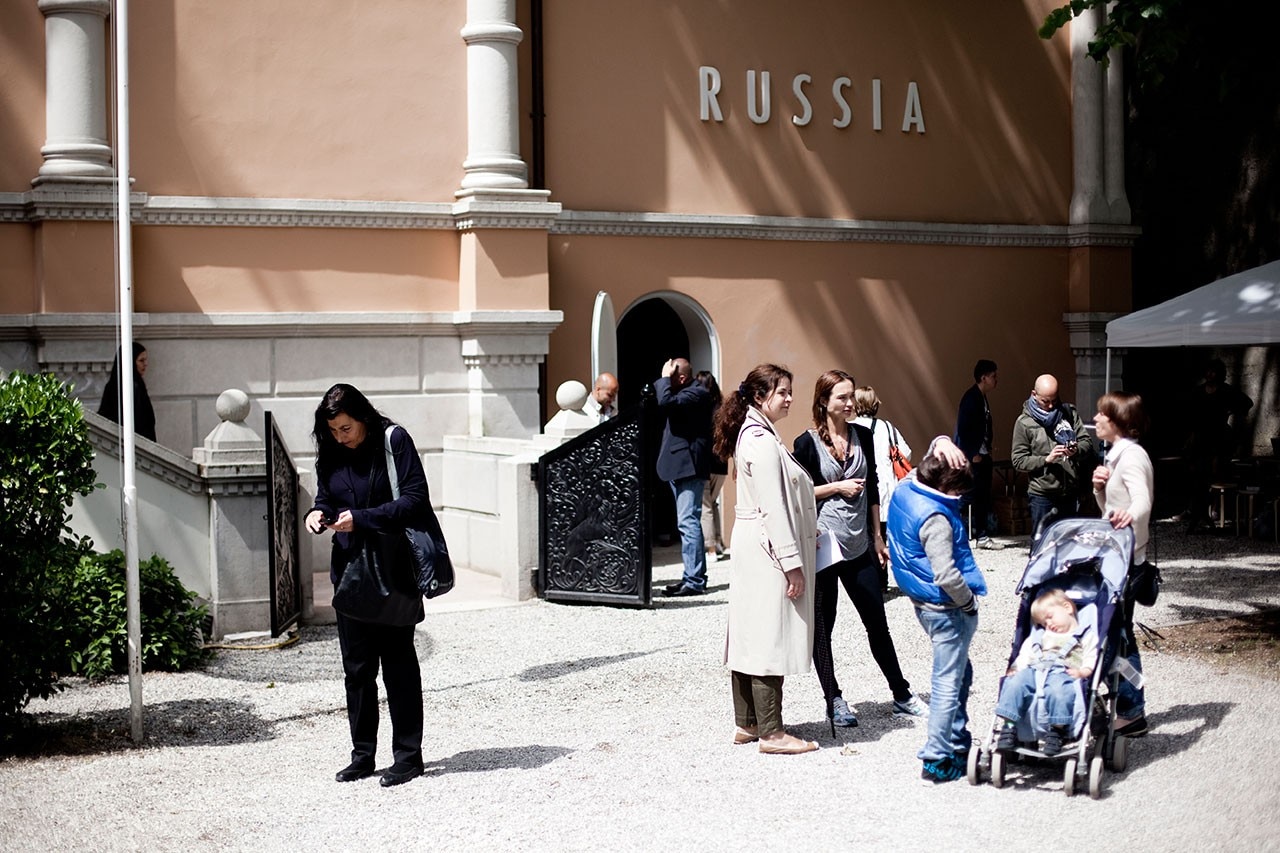
This work, that expresses in material form a modern reinterpretation of the myth of Danaë, has taken over the entire space, even requiring structural work to be carried out on the pavilion — built in 1914 by Alexei Shchusev — in the form of a large square opening between the two floors. A bucket of coins forged by Zakharov — each is a Danaë — passes up through the opening in the ceiling. The coins shower down like fine rain in a circle from the upper to the lower level.
Here they are collected by women protected by umbrellas who put them back into the bucket, which is hoisted by hand up to the first floor, from where the cycle starts all over again. The performance works on various levels — cultural, philosophical, sexual and psychological — engaging visitors in the presentation of a myth and its values.
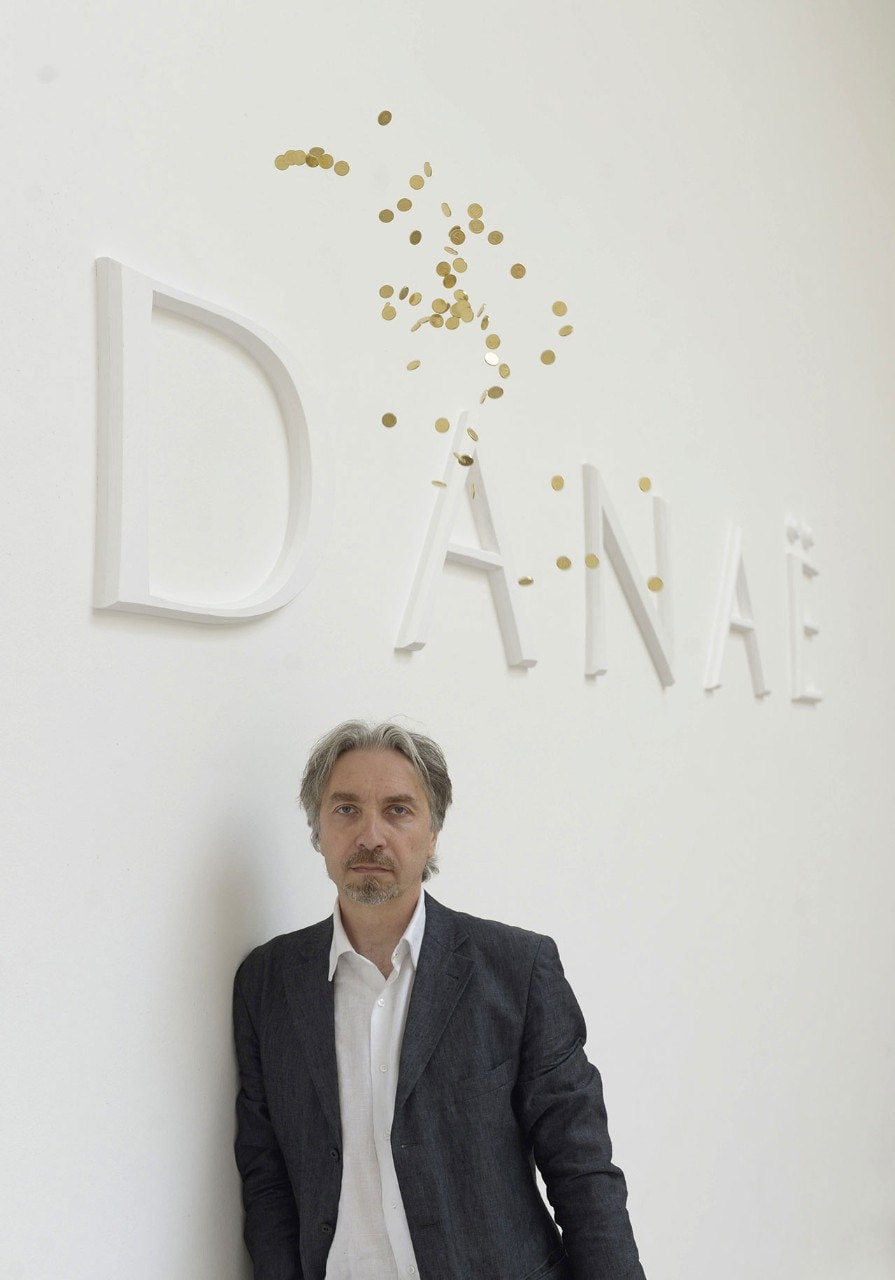
At the Giardini, the formal elements of the myth are all there but they are used as instruments to overturn the power games between men and women revealed by the Greek myth and above all to bring to the fore a number of values that Zakharov claims are neglected by today's society, as well as condemning others. At the Russian pavilion women are not passive observers or instruments in the hands of men but a driving force for the whole building, the engine for the mechanism that circulates the coins: the small Danaë specially forged by the artist that are the guarantor for the values that they support — trust, cohesion, freedom, love.
“I think that one should speak more of values because we are losing them,” he states. The women's room on the ground floor — symbol of the maternal womb, a place that men are forbidden to enter — is the beginning of the cycle staged by the installation. Those entering have the task of collecting the coins, as many as they want, keeping one for themselves and putting the rest in the bucket that sits at the entrance of the gynaeceum, so as to foster positive values to put back into the cycle that animates the building.
